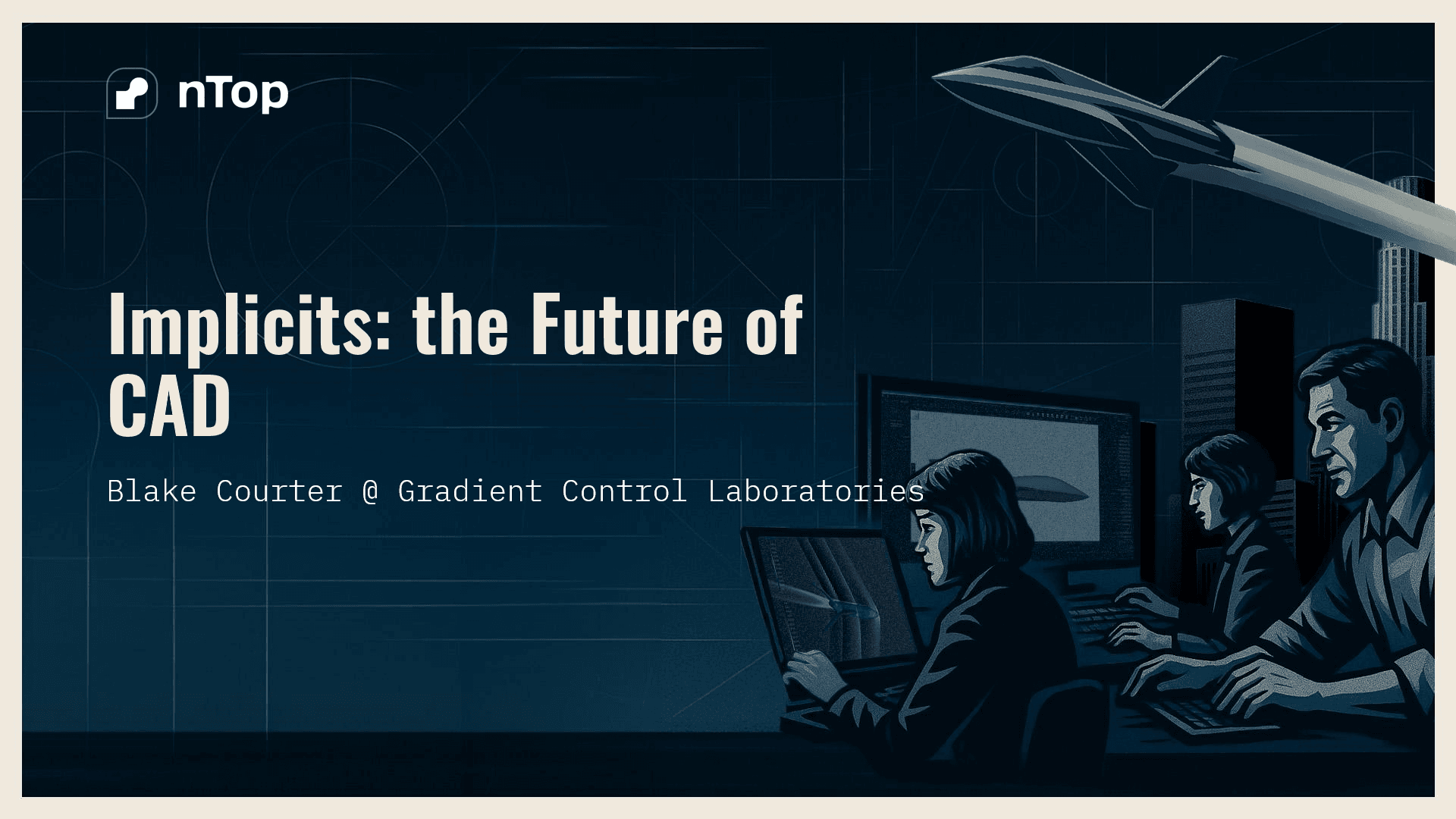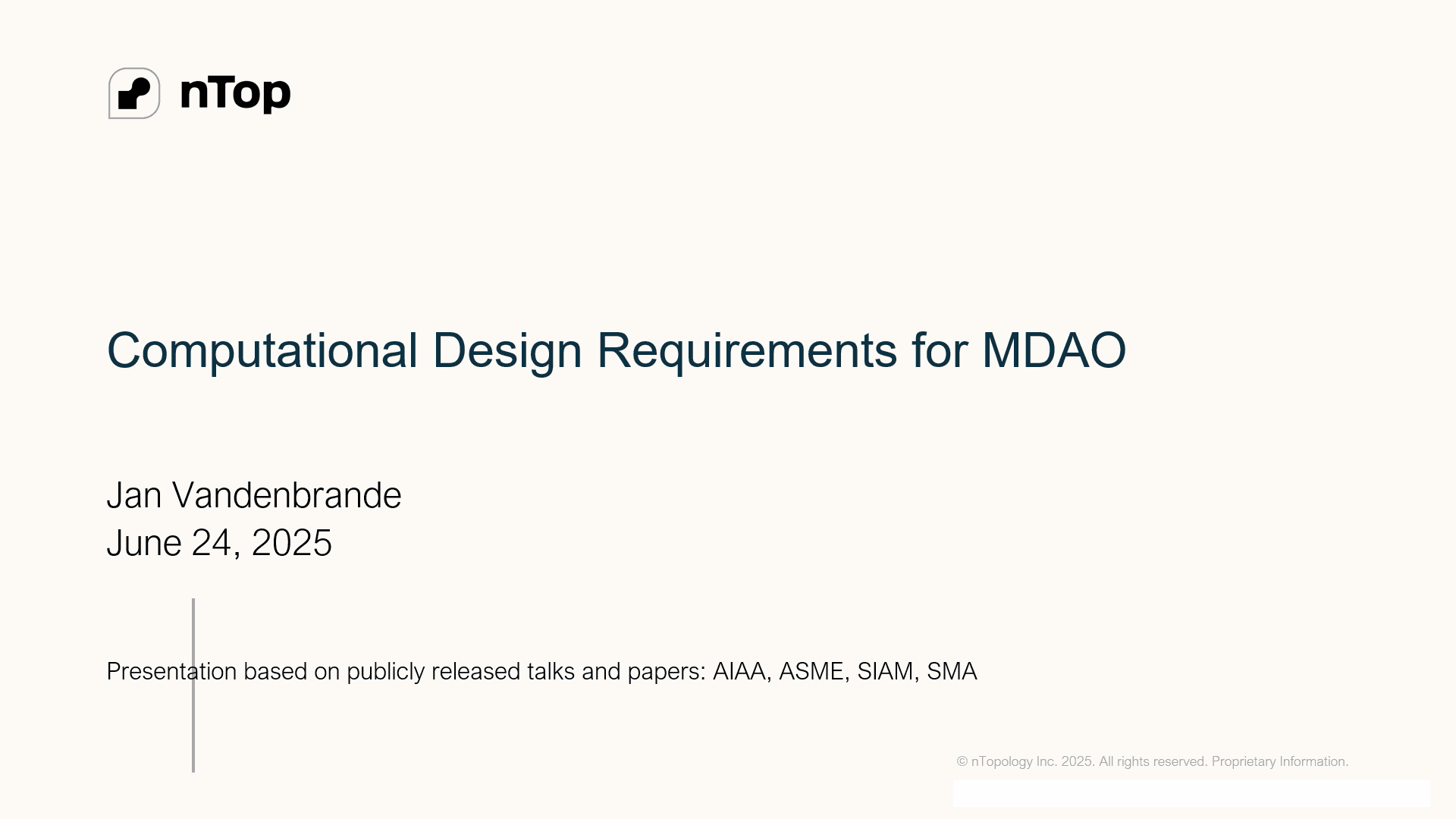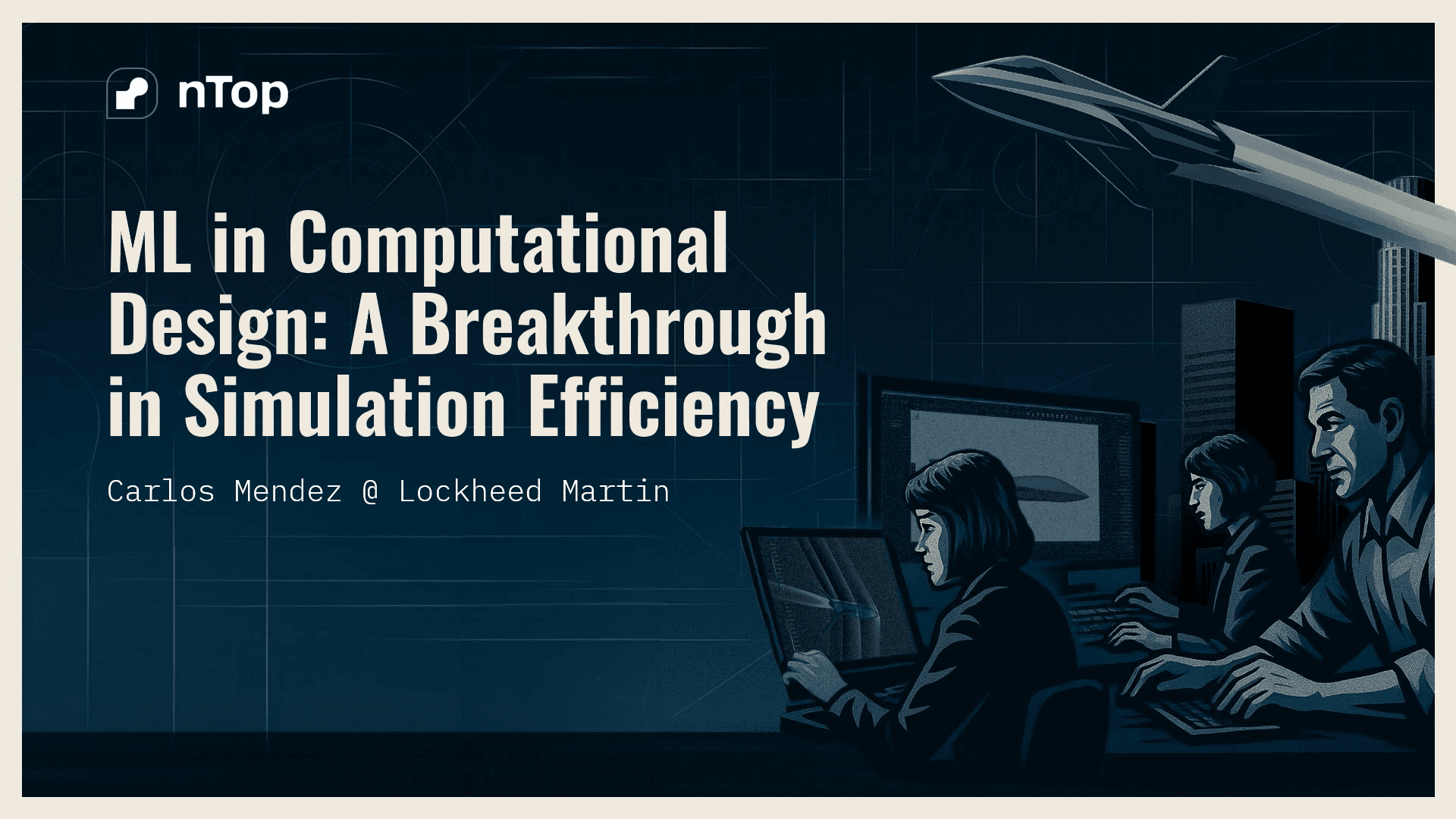Topology optimization additive manufacturing constraints in nTop

Written by nTop
Published on December 17, 2020
In the recent nTop 2.24 update, we introduced the topology optimization overhang constraint for Additive Manufacturing. In this blog post, we take a deeper look at the unique capabilities of this new feature and how it allows you to create optimization workflows that are different from every other solution currently in the market.
Topology optimization is one of the most common initial steps in every DfAM workflow — especially for structural lightweighting applications. Manufacturing constraints allow you to take into account the intricacies of the production process right from the start so that you can reach an optimal solution faster. Not every topology optimization tool is built the same though.
nTop gives you complete control of your topology optimization workflows. Instead of locking design parameters inside a “black box”, our software allows you to apply your domain expertise to generate parts that fit your specific needs.
This does not mean that TopOpt in nTop is suitable only for advanced users. Following a similar approach, you can create reusable workflows that generate parts that are optimized for AM and that outperform traditionally designed parts without having to start from scratch every time.
Let’s see how this is the case with a practical example…
Overhang constraint for additive manufacturing
Here are the results of running topology optimization on the GE bracket with and without the AM overhang constraint. The colored regions are the support structures required to manufacture this part in this specific orientation.

Notice the difference in the volume and mass of the required support structures between the Topology Optimization results with (left) and without (right) the overhang constraint.
Both solutions fulfill the mechanical loading requirements of this use case, but by applying the overhang constraint we reduced the mass of support structures required to manufacture this part from about 130 grams down to about 45 grams. In this example, the mass of the part is also reduced when we applied the overhang constraint from about 141 grams down to 136 grams.
This has a significant impact on the overall manufacturing cost, as 3 times less material is consumed by the support structures. It can also substantially reduce the time needed to post-processes and finish the part or, in some cases, eliminate the need for support structures altogether.
Remember: nTop enables you to automatically reconstruct and smoothen the results of topology optimization and export the end part to a format compatible with traditional CAD systems.
This was a quick example of how you can use this tool to get some immediate value. Now, let’s take a closer look at some more advanced use cases.
Advanced capabilities
Here are three unique capabilities of nTop's topology optimization tools. These features enable you to effectively apply your engineering and manufacturing domain expertise to the optimization process. They are mostly relevant to advanced users who want to take their generative design processes a step further.
Define multiple support boundary regions
By defining multiple support boundary regions, you can exclude certain areas to protect critical features of your design that you do not wish to come in contact with support structures. Alternatively, you can include additional areas to extend the feasible design space of the optimization. This level of control captures design intent that automated tools fail to understand.
For example, it usually makes sense to add support structures to surfaces that interfere with other parts — like, mounting points — as these features will be CNC machined afterward anyway to achieve a tight fit. On the other hand, generating self-supporting features in areas that are hard to reach or that need to have a consistent surface roughness can be very beneficial.

This example highlights how using a sign (left) or multiple (right) boundary regions can alter the results of topology optimization.
Freely define build direction
Most other topology optimization tools allow you to define a build direction only along the X-, Y-, or Z-axis. This is sufficient for a quick optimization, but for a detailed study, it is important to examine every possible part orientation.
This is why nTop allows you to freely define any build direction. This way you can set up a comprehensive Design of Experiments (DoE) to analyze every possibility. Combine this with the design automation capabilities offered by nTop Automate — the programmatic command line interface of nTop — to create powerful, reusable, and robust optimization processes.
Apply a boundary penalty
This feature was introduced in a previous update, but it can be combined with the additive manufacturing constraints to improve your design processes.
The boundary penalty is defined as a value between zero and one. It determines the strategy that the algorithm will follow to add material in the design space. For values close to zero, the material will “stick” close to the boundary surfaces, while for values close to one, it will avoid these regions if possible.
Since the boundary penalty is a parameter, you can also include it in your DoEs to analyze its influence on the final performance of the part. The difference can be significant The boundary penalty is also a field. This allows you to use different values in different regions of your design space. The practical implication of this is that you can generate topology optimized parts that have a cross-section that resembles an I-beam in some regions and a more organic or circular cross-section in others.
See the effect on the boundary penalty on topology optimization results in action in the video below:
Coming up next...
The overhang constraint is the latest addition to nTop's optimization toolset. We are currently working on implementing additional AM-specific topology optimization constraints — like a minimum feature size — to give you even greater control over your processes. In the future, we will also expand these capabilities to include even more manufacturing processes.
We are looking forward to seeing how you will apply these new tools. Feel free to share your creations with us on your favorite social channel.
Do you want to learn how nTop's optimization capabilities can be applied to your project? Request a demo and speak with our technical sales experts.

nTop
nTop (formerly nTopology) was founded in 2015 with the belief that engineers’ ability to innovate shouldn’t be limited by their design software. Built on proprietary technologies that upend the constraints of traditional CAD software while integrating seamlessly into existing processes, nTop allows designers in every industry to create complex geometries, optimize instantaneously, and automate workflows to develop breakthrough parts and systems in record time.




